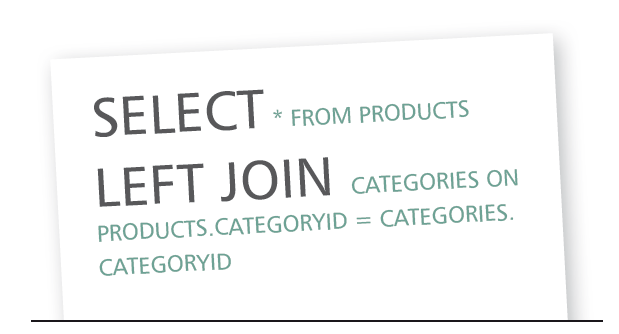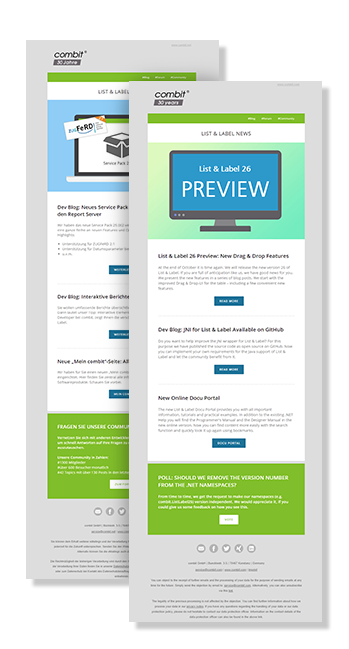
Of course, the .NET component offers full support for parametrized drilldowns. I’ve also covered the new filtering features at the database level and the support for multiple report containers before. Besides these major features, there are a number of other new classes and cool stuff to explore:
- 1:1 relations in the DbCommandSetDataProvider are now optionally accessed using JOIN statements. This provider is one of the most popular data sources. This new feature dramatically improves performance if 1:1 relations are used. In our tests, for a local SQL server the required print time typically decreased around 15-20%, for remote SQL servers we have measured print time decreases of 80%, meaning a print of 16 seconds is now finished in 3 seconds, the result is now 5 times faster than before. Of course, results will vary with the number of 1:1 fields that are used, the number of relations that are accessed etc.
- New data provider for Microsoft Access data. While it has been possible before to bind to Access you had to decide beforehand wether the JET engine or ACE should be used. The new provider automatically switches depending on the installed drivers and doesn’t need any connection string fiddling.
- New data provider for Google BigQuery. This popular big data store enables you to quickly query millions and millions of rows of data. You can now easily bind to such queries and report them directly.
- Improved support for SQLite in-memory databases. This lightning fast data provider option now also supports relations, sortings, query optimization, advanced filtering and a progress meter. Also, there’s no need to fiddle with the SQLite distribution as this already comes as a redistributable module.
- New In-Memory data provider that allows to wrap existing datasources in an In-Memory SQLite database. Besides the enormous performance gains (depending on the original data source of course) this also is a very cool way to circumvent restrictions of the other providers. For example, by wrapping a CSV data provider into an in memory database you suddenly get features like sorting, filtering etc. that are not available for a “pure” CSV data source. This also allows to define relations between different providers, e.g. a relation between a CSV file and an Excel data source.
- The Excel DataProvider can now read Excel 2013 files so you no longer have to convert Excel files to the “old” Excel format.
We also have good news for ASP.NET Classic or MVC developers. Until version 20 there were a number of restrictions when using sophisticated reports on the web – no report parameter support, no interactive report features like expandable regions, on-the-fly sortings etc. This will change – I’ll cover that in the next feature focus.
On a side note, we’ll start our public beta program for List & Label 20 by mid September. As a registered customer with an active Enterprise Edition you’ll automatically receive your invitation as soon as we’re ready to go. The whole team is eagerly awaiting your feedback. We’ll also have a bug bounty program in place again this year – thank you all for your participation in the past, we’re looking forward to working with you during the beta phase again





